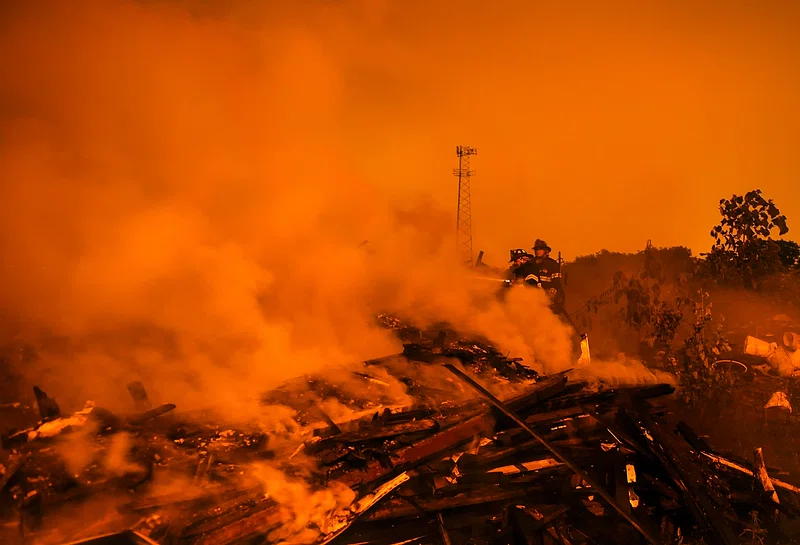Wildfires in Los Angeles are devastating, both emotionally and financially. With damages potentially reaching $250 billion, it’s natural to wonder—who ends up paying for all this destruction? Let’s break it down in simple terms to understand the impact of these massive costs and the people or entities responsible for footing the bill.
Understanding the Scale of the Los Angeles Wildfires
The Severity of Recent Wildfires
Wildfires in Los Angeles, fueled by dry weather, strong winds, and an abundance of vegetation, have become more frequent and intense. Massive events, like the Woolsey Fire in 2018, destroyed thousands of homes and forced entire communities to evacuate. While such disasters are part of California’s history, the costs are escalating at an alarming rate.
A $250 Billion Price Tag
The $250 billion estimate includes direct damages, such as destroyed homes, businesses, and infrastructure, as well as indirect losses like reduced economic productivity, healthcare costs, and environmental damage. This staggering figure is more than some countries’ annual GDP.
Breaking Down the Costs of Wildfire Damage
1. Property Damage
Wildfires destroy homes, businesses, and vehicles. Rebuilding these properties can cost billions. For example, the Camp Fire in Northern California led to $8.5 billion in insured property losses alone.
2. Infrastructure Repair
Critical infrastructure, such as power lines, roads, and water systems, often takes a major hit during wildfires. Repairs can take years and cost billions of dollars, especially when utilities are involved.
3. Economic Losses
Businesses affected by wildfires face revenue losses from closures, supply chain disruptions, and reduced tourism. The ripple effect can hurt local and state economies for years.
4. Healthcare Costs
The smoke from wildfires contributes to respiratory and cardiovascular illnesses. Treating these conditions adds a significant burden to the healthcare system, with long-term effects on public health.
5. Environmental Costs
Wildfires destroy forests, wildlife habitats, and ecosystems. The cost of restoring these natural resources is difficult to quantify but is a substantial part of the overall damage.
Who Pays for Wildfire Damages?
1. Insurance Companies
Insurance companies are among the primary payers when it comes to covering wildfire damages. Homeowners, renters, and businesses with insurance policies can file claims to recover some of their losses. However, rising wildfire risks are causing insurance premiums to skyrocket, and some companies are even pulling out of high-risk areas.
2. The Government
Federal, state, and local governments play a huge role in funding wildfire recovery efforts. Programs like FEMA (Federal Emergency Management Agency) provide disaster relief, while state funds are allocated to firefighting and recovery projects. However, these costs are ultimately borne by taxpayers.
3. Utility Companies
In some cases, utility companies are held liable for starting wildfires. For example, Pacific Gas & Electric (PG&E) was found responsible for several deadly fires and faced billions in fines and lawsuits. These costs are often passed on to customers through higher energy bills.
4. Property Owners
Not all property owners are fully insured, leaving many to cover the costs of rebuilding out of pocket. Those without adequate coverage or who lose homes outside insured limits often face severe financial hardship.
5. Businesses
Businesses that suffer losses during wildfires may rely on business interruption insurance, but not all companies have this coverage. Many small businesses struggle to recover after wildfire-related disruptions.
6. Environmental Agencies and Nonprofits
While not direct payers, environmental agencies and nonprofits contribute significantly to restoring damaged ecosystems. They rely on donations and government grants to fund these efforts.
How the Government Supports Recovery
Federal Assistance
FEMA provides disaster relief funds to individuals and communities affected by wildfires. This assistance covers temporary housing, home repairs, and other critical needs.
State Programs
California has dedicated programs to support wildfire victims, including financial aid, rebuilding assistance, and mental health resources. However, the state budget faces immense pressure due to the growing frequency and scale of wildfires.
Firefighting Costs
The cost of firefighting alone is astronomical. In 2020, California spent over $1.3 billion on fire suppression efforts, with additional costs borne by federal agencies.
The Role of Insurance in Wildfire Recovery
Rising Insurance Costs
As wildfires become more frequent, insurance companies are reassessing their risks. Many homeowners in fire-prone areas face skyrocketing premiums or find it difficult to obtain coverage at all.
The California FAIR Plan
For those unable to secure traditional insurance, the California FAIR Plan provides basic fire insurance. However, it doesn’t cover all risks, leaving many underinsured.
Challenges for Insurers
The financial impact of wildfires has led some insurers to leave the California market altogether. This trend leaves homeowners with fewer options and increases the burden on government programs.
Utility Companies and Their Liability
The PG&E Example
PG&E, California’s largest utility company, has been blamed for starting several major wildfires due to faulty equipment. The company declared bankruptcy in 2019 after facing billions in wildfire-related claims.
Who Ultimately Pays?
While utility companies may initially foot the bill, they often pass costs to consumers through higher energy rates. Additionally, these companies use public funds for some settlement payments, effectively shifting part of the burden to taxpayers.
Environmental and Long-Term Costs
Restoration Efforts
Replanting forests, rebuilding wildlife habitats, and addressing soil erosion are essential but costly processes. These efforts take years and require ongoing funding from government agencies and environmental organizations.
Carbon Emissions
Wildfires release massive amounts of carbon dioxide into the atmosphere, contributing to climate change. The environmental cost of these emissions is immeasurable and affects global efforts to combat climate change.
Reducing the Financial Burden of Wildfires
1. Preventive Measures
Investing in wildfire prevention, such as controlled burns and vegetation management, can significantly reduce the risk and cost of future fires.
2. Stricter Building Codes
Enforcing fire-resistant building materials and better urban planning can minimize property damage in fire-prone areas.
3. Community Preparedness
Educating communities about evacuation plans, fireproofing homes, and emergency readiness can save lives and reduce costs.
4. Expanding Insurance Access
Making insurance more accessible and affordable for homeowners in high-risk areas can provide greater financial security.
5. Addressing Climate Change
Long-term solutions must include efforts to combat climate change, as rising temperatures and prolonged droughts are key drivers of wildfire intensity.
Conclusion
The cost of Los Angeles wildfires—estimated at $250 billion—is a sobering reminder of the devastation these disasters bring. From property damage to environmental destruction, the financial burden is immense. While insurance companies, governments, and utility companies play significant roles in covering the costs, much of the weight ultimately falls on individuals and taxpayers. By investing in prevention, preparedness, and long-term solutions, we can reduce the financial and human toll of wildfires in the future.
FAQs
1. Why are Los Angeles wildfires so expensive?
The costs include not just property damage but also economic losses, healthcare expenses, and environmental restoration. The scale of destruction drives up the price tag.
2. Who pays the most for wildfire damages?
Insurance companies, governments, and utility companies bear much of the financial burden, but individuals and taxpayers also contribute significantly.
3. Can wildfires be prevented?
While not all wildfires can be prevented, measures like controlled burns, vegetation management, and stricter building codes can reduce their frequency and severity.
4. How does climate change affect wildfires?
Climate change leads to higher temperatures, prolonged droughts, and drier vegetation, all of which increase wildfire risks.
5. What should homeowners do to prepare for wildfires?
Homeowners should maintain defensible spaces, invest in fire-resistant materials, have an evacuation plan, and ensure adequate insurance coverage.



